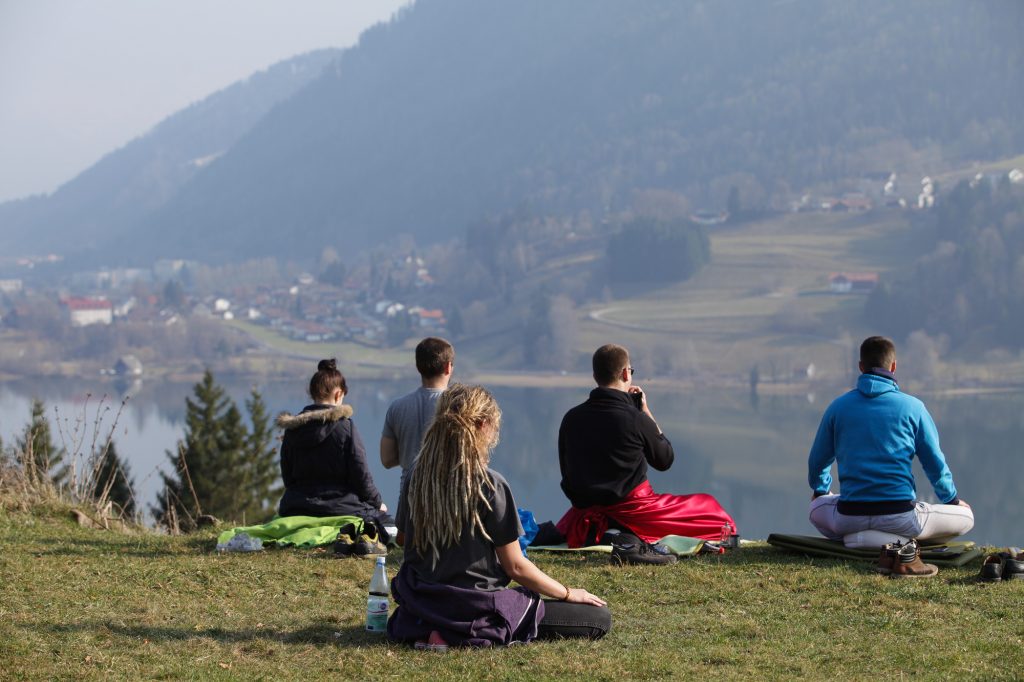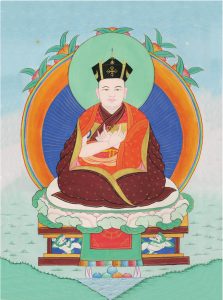
While the word “meditation” can refer to countless spiritual disciplines, in the Buddhist context it means to “effortlessly remain in what is.” This can be trained by calming and holding the mind, by cultivating compassion and wisdom, or by working with the body’s subtle energies and visualising Buddha forms, aspects of light and energy. The most direct method, known as “Guru Yoga”, is the identification with one’s Buddha nature. This is the primary meditation practice used in all Diamond Way Buddhist centres.
16th Karmapa Meditation
 This is the main daily practice in Diamond Way Buddhist centres. It is a “Meditation on the Teacher” (“Guru Yoga” in Sanskrit) which was composed by the great enlightened master, H.H. the 16th Karmapa Rangjung Rigpe Dorje (1924-1981). This method entails visualisation, receiving Karmapa’s blessing, and uniting with his enlightened essence. One trains to view the world from the level of purity and perfection. When the oneness of the seer, that which is seen, and the act of seeing is unbroken – during and between periods of meditation – the goal of the Great Seal (“Mahamudra” in Sanskrit) is accomplished.
This is the main daily practice in Diamond Way Buddhist centres. It is a “Meditation on the Teacher” (“Guru Yoga” in Sanskrit) which was composed by the great enlightened master, H.H. the 16th Karmapa Rangjung Rigpe Dorje (1924-1981). This method entails visualisation, receiving Karmapa’s blessing, and uniting with his enlightened essence. One trains to view the world from the level of purity and perfection. When the oneness of the seer, that which is seen, and the act of seeing is unbroken – during and between periods of meditation – the goal of the Great Seal (“Mahamudra” in Sanskrit) is accomplished.
The 16th Karmapa asked his first Western students, Lama Ole and Hannah Nydahl to teach this method as the main practice in the Buddhist centres they established in the West in his name. As it is condensed and suitable for general use, it is easy to work with and follow, as well as being a very effective meditation.
Other meditation practices
For those who are familiar with the 16th Karmapa meditation and want to develop and deepen their experience, other meditation practices are taught in Diamond Way Buddhist centres. Typically, one would learn Refuge Meditation and train in the Four Foundational Practices (“Ngondro” in Tibetan). Experienced practitioners in our centres have been authorised by Lama Ole to give explanations on these meditation practices.
